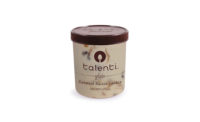Like all food companies, refrigerated and frozen foods manufacturers rely on packaging to effectively deliver their products from the production line to the consumer’s plate. But, manufacturers also need to incorporate sustainability practices from the tip of the supply chain down through delivery. And, once the product is consumed, what remains is the package—a visible reminder of a product—but not the value of the package.
Food companies must never lose sight that wasted food is the poorest sustainable outcome. Regardless of how recyclable, reusable, biodegradable or compostable the package is or how few resources its production and distribution consumed, if the refrigerated or frozen food product is never sold—because it exceeded the expiration date or due to freezer burn—it fails and the sustainable contributions of the package are lost.
Less is more, especially for packaging
Consumers don’t always understand the “real reason” why food gets packaged, nor are they often mindful of a package’s limitations. They want it all, and manufacturers are doing their best to deliver quality, convenience and green products.
In 2010, Greendex research from National Geographic and GlobeScan showed that 40% of consumers said they avoid excessively packaged goods “all” or “most of the time.” (The study covered 17 countries and surveyed 17,000 people.) Similarly, the Natural Marketing Institute’s (NMI) 2011 LOHAS Consumer Trends Study outlined that 75% of Americans believe many consumer products are over-packaged. Consumers clearly prefer minimal packaging, followed by recyclable packaging and use of environmentally-friendly packaging materials.
Defining sustainable packaging
One of the most cited interpretations of “sustainability” comes from a 1987 report by the Bruntland Commission on Environment and Development (formerly the World Commission on Environment and Development) that defines sustainability as “development that meets the needs of the present without compromising the ability of future generations to meet their own needs.”
The definition has evolved into addressing three measurements—environment, economic and social, a trio that is often referred to as the “Triple Bottom Line,” and recognizes responsibility to all three measurements.
In packaging, sustainability is manifested in:
- The sourcing of raw materials
- The production process
- Distribution
- The final, quality product delivered to the consumer.
Considerations include:
- How chemicals, electricity, fuel and water are used throughout the process
- The carbon footprint
- Impacts on air and water pollution
- The ultimate fate of the package
Sustainable packaging efforts that resonate with consumers include the renewable nature of the container, as well as the use of reduced raw materials in its construction. With the latter, the question every refrigerated and frozen food manufacturer must ask is, “How much, if any, material can be removed or redesigned before it affects the product?”
Delivering quality product
Data suggests that nearly one-third of consumer waste is food packaging, and much of it cannot be recycled. Technology to reduce that waste and its impact on
|
Data suggests that nearly one-third of consumer waste is food packaging, and much of it cannot be recycled. |
the economy and the environment continues to be of utmost importance throughout the food chain. But, manufacturers must do their homework and consider all aspects of sustainability and what the total package must deliver for the product within, not just the most visible one for consumers to easily grasp.
Refrigerated and frozen food manufacturers must protect the product from the extreme temperature fluctuations it has to endure during transport and stocking. That’s why there’s a maximum to how far packaging materials can be minimized.
For example, it’s critical for a package to prevent moisture migration, especially for frozen foods that have a potentially long life in an environment where moisture is prevalent. The moisture can physically destroy the actual package.
Some packaging materials, for instance, can absorb condensation. This can result in softening, wrinkling and buckling of the container, all of which might lead a consumer to believe that product as being inferior or unsafe, which can cause it to remain unsold. Additionally, glues that are used to close the carton may be formulated to be “more sustainable,” however, if that glue does not keep the carton closed, appearance and possible product quality is in jeopardy. Even inks must be considered; if a “sell by date” smears and becomes illegible, the product may end up as unsaleable.
As an alternate, when a consumer purchases a bundle of six individually-wrapped frozen chicken breasts, defrosts it and uses each as needed, this minimizes waste. Such an offering is considered a better packaging approach by the manufacturer.
Real-time example
Earlier this year, Crystal Farms, Minnetonka, Minn., introduced an innovative stand-up package for its 8-ounce refrigerated shredded cheese line. The new pouch addresses sustainability in multiple ways, using 20% less packaging to hold the same amount of cheese and taking up 30% less space in refrigerated cases at retail. The downsized pouch also reduces the amount of corrugated to ship the cheese, improving packing efficiency in the truck, thus improving fuel efficiency during transport.
The stand-up pouch is more functional, easier to pour and features a new premium twin-track zipper for better closing and improved freshness, which reduces waste. All of these attributes help to reduce Crystal Farms’ environmental footprint.
A sustainable outlook
It is not always easy to identify more sustainable packaging that still delivers quality refrigerated and frozen foods to the consumer. Sometimes the technology is unavailable or cost prohibitive.
But, the effort is definitely the trend and shows no signs of subsiding. According to Pike Research, Boulder, Colo., sustainable packaging revenues are expected to rise from $88 billion in 2009 to $170 billion by 2014. In particular, more sustainable plastic packaging offerings will drive this growth.
The future of sustainable food packaging will be a synergy of technologies, including nanotechnology. The technology, which harnesses the power of particles between one and 100 nanometers in length, could be used to combine organic materials to create new packaging materials with superior barrier, mechanical and thermal properties, for example.
Nanoscience could also be used to engineer sensors to register environmental changes such as temperature fluctuations and moisture migration. For example, nanochips in smart inks used for food packaging could register warnings if the temperature of the package rises above certain programmed limits. It could also allow for advancements in active packaging, which enables the food package to adjust its permeability or barrier properties during transportation and storage.
Finding sustainable solutions
Refrigerated and frozen food manufacturers must explore the growing number of sustainable packaging options being introduced to the marketplace. Environmentally, financially and socially, they make sense.
However, it is critical to consider the full impact of adding a new or light-weighted material to existing operations. Introducing a material or container to the packaging line without understanding how it will function with legacy equipment could result in costly product and packaging waste, stoppages and downtime to assess the issue.
When considering a sustainability-enhancing solution, call on materials and equipment suppliers to brainstorm any potential issues from the start. Year to year, PACK EXPO provides a venue for these parties to come together. Industry players can look forward to discovering and assessing innovation at PACK EXPO Las Vegas 2013, Sept. 23-25, 2013 at the Las Vegas Convention Center.



